You’ve successfully navigated the Build phase (assembling the MVP hive) and the Measure phase (meticulously tracking the honey flow—your Actionable KPIs). You now possess something priceless: Data.
The final, most crucial step of the Lean Startup loop is the Learn phase. This is the moment where raw, numerical data transforms into the strategic insight that determines your future. It's the moment you must decide: Do we pivot, or do we persevere?
For the intuitive, "vibe coder" founder, this phase is about translating your core instinct into a validated, strategic growth plan. You step away from the keyboard and act as the chief architect of your digital apiary, using modern automation and systemic thinking to handle the execution.
🐝 From Honeycomb Data to Strategic Decision
The data collected from your API logs and actionable KPIs must be rigorously analyzed to understand the "taste" of your honey—how users perceive and use the value you created. The Learn phase forces you to confront the truth about your product-market fit.
The Pivot: Changing the Hive’s Purpose
Pivoting means changing a fundamental element of your strategy while retaining some core learning or technology. It is a necessary and healthy course correction, not a failure. It signals that your initial hypothesis about where value lies was incorrect, but the data has pointed you toward a better direction.
The decision to pivot must be driven by data showing a lack of meaningful engagement: low feature usage, high user churn, or a poor conversion rate on your Single Metric That Matters (SMM).
Key Areas for a Pivotal Change (The Hive Shift):
- The Target Beekeeper Pivot (Customer Segment): You built a hive for commercial beekeepers, but the data shows hobbyists are the only ones signing up and paying. You pivot your marketing, features, and entire product language to serve the hobbyist segment, abandoning the commercial path.
- The Honey Pivot (Value Proposition): You hypothesized that your users wanted a tool to track bee health. However, the data reveals the only feature people consistently use is the ability to track local flora bloom cycles. You pivot the core value proposition of your product from "Bee Health Tracker" to "Local Flora Calendar for Beekeepers."
- The Channel/Tech Pivot (Delivery Mechanism): You built a React Native mobile app, but your API data shows that 85% of traffic comes from desktop users struggling to use the mobile web version. You pivot away from mobile-first and invest resources in a powerful desktop web dashboard.
The Vibe Coder’s Take: Use your intuition to decide what to pivot to, but use the data to confirm that the previous direction was wrong. Once the pivot decision is made, you must cycle back to the Build phase immediately to test the new idea with a new, even smaller MVP.
The Persevere: Scaling the Hive That Works
If the data shows strong engagement, a healthy SMM, and high conversion rates, it’s time to persevere. Perseverance means you have achieved product-market fit for your current MVP, and you can now confidently invest in stabilizing, hardening, and scaling the system you've built.
Perseverance Signals:
- Users are actively paying or engaging with the core value proposition.
- Retention rates are acceptable (the beekeepers keep coming back to their dashboard).
- The system is creaking under the load, indicating organic growth.
When you persevere, the focus shifts from discovery (finding value) to execution (delivering value consistently). You are now ready to invest in more robust tools and architecture.
Leveraging AI & Automation for Continuous Learning
In the Learn phase, you need to iterate, experiment, and automate analysis as quickly as possible. Modern tools allow you to supercharge this cycle, allowing the intuitive founder to focus on strategic insights rather than repetitive backend tasks.
1. Agentic AI: The Smart Queen Bee
Traditional coding requires you to write every specific step (IF this THEN that). The future lies in Agentic AI, which allows you, the founder, to define the high-level goal, and the AI agent determines the necessary, often complex, sequence of steps and API calls to achieve it.
| Traditional Coding (API-Centric) | Agentic AI (Goal-Centric) |
|---|---|
| Code: Write a complex function that retrieves sales data, calculates LTV, and formats an email body. | Goal: Segment and automatically outreach to users whose Lifetime Value (LTV) is in the top 10%. |
| Focus: Syntax, Function definitions, Debugging. | Focus: Strategy, Outcomes, Defining the Vibe (Tone of the email). |
Powered by Large Language Models (LLMs) like Gemini, these agents can autonomously compose sequences of API calls to internal and external services:
- Call your Supabase API to get user sales history.
- Call a custom FastAPI endpoint to run the LTV calculation algorithm (the Queen Bee logic).
- Call the SendGrid API to dispatch a personalized email, choosing the correct tone based on your prompt ("send a friendly, non-salesy message").
- Call the Slack API to notify your team that the outreach was completed.
This process makes the "Learn" cycle incredibly fast because iteration is focused on defining better outcomes and refining your goals, removing the bottleneck of constantly debugging or modifying complex code. For the vibe coder, this is powerful: The AI agent translates your intuition ("I need to reward my best customers") into working, automated technology.
2. Workflow Automation: The API Glue (Make & n8n)
When you persevere, your simple MVP needs automation. This is where tools like Make.com and n8n shine. These platforms are the API glue that visually connects your different systems together, replacing the need to write complex middleware or server logic.
They are visual, drag-and-drop tools that link various API services using webhooks (digital notification triggers).
Practical Automation Example:
- Trigger: A beekeeper's session ends on your React Dashboard, sending a webhook notification to Make.com.
- Action 1 (Data): Make.com listens for the webhook and checks your Supabase database API to see if this user logged less than five minutes of activity (a low engagement signal).
- Action 2 (Logic): If the activity is low, Make.com calls a specific, secure API endpoint on your FastAPI backend designed specifically to generate a "Why did you leave?" survey link.
- Action 3 (Communication): Make.com then uses the Mailchimp API to instantly send the customized survey link to the user.
This entire flow automates your Learn mechanism. It generates a clear, measurable feedback loop based on your Actionable KPIs (low usage). Crucially, you built this entire workflow in minutes without touching the underlying server code.
The Hive Network: Scaling After Learning
Once you've achieved success and decided to persevere through several learning cycles, your next technical decision involves scaling the architecture. If you continue to bolt features onto your simple MVP, you will eventually create a Monolith—a single, giant hive that does everything.
The Monolith vs. The Microservices Apiary
- The Monolith (Single Hive): Your MVP starts here. It's fast to build but slow to change. If one single bee (a piece of code) gets sick, the whole hive shuts down, and debugging becomes a nightmare because every component is tightly intertwined.
- The Hive Network (Microservices Architecture): This is the scalable, robust approach. It involves splitting your application into small, independent "hives," each specialized for one function.
| Specialized Hive (Microservice) | Function | Backend Tech (Example) |
|---|---|---|
| Auth Hive | Manages all user logins and permissions. | Node.js/Express.js (for fast security) |
| Payment Hive | Handles billing, subscriptions, and security tokens. | Python/FastAPI (for complex transaction logic) |
| Analytics Hive | Processes historical honey flow data and generates reports. | Dedicated data warehouse/tool |
The API Contract: The Language of Scale
The key to Microservices is that these specialized hives communicate only via APIs. The Frontend Dashboard never talks directly to the Payment Hive; it sends a request to the Payment API, and the Payment Hive is obligated to respond in a predefined, structured way.
- Fault Tolerance: If the Payment Hive goes down, the User Auth Hive (logins) and the Analytics Hive continue to function. The system is resilient.
- Technology Diversity: You can use the absolute best tool for each specific job. Use Python for complex data science (Queen Bee logic) and Node.js for rapid I/O tasks like user registration.
The Lean Scaling Rule
Microservices introduce complexity, which violates the Lean principle of simplicity. Therefore, the Lean Scaling Rule is paramount:
Only introduce a Hive Network (Microservices Architecture) after validated learning proves you need it, and only when the Monolith is actively slowing down your ability to deliver value.
The most important takeaway of the Learn phase is that the process of building a successful startup isn't about writing a perfect initial code base. It’s about creating a living, breathing system—an apiary—that is designed to learn, adapt, and grow in response to your beekeepers (users).
Keep your hive buzzing, your honey (value) flowing, and your learning continuous.
This final post completes the full B-M-L cycle, demonstrating how a founder can move from raw observation to a confident strategic decision using only free or low-cost tools and a methodologically rigorous framework.
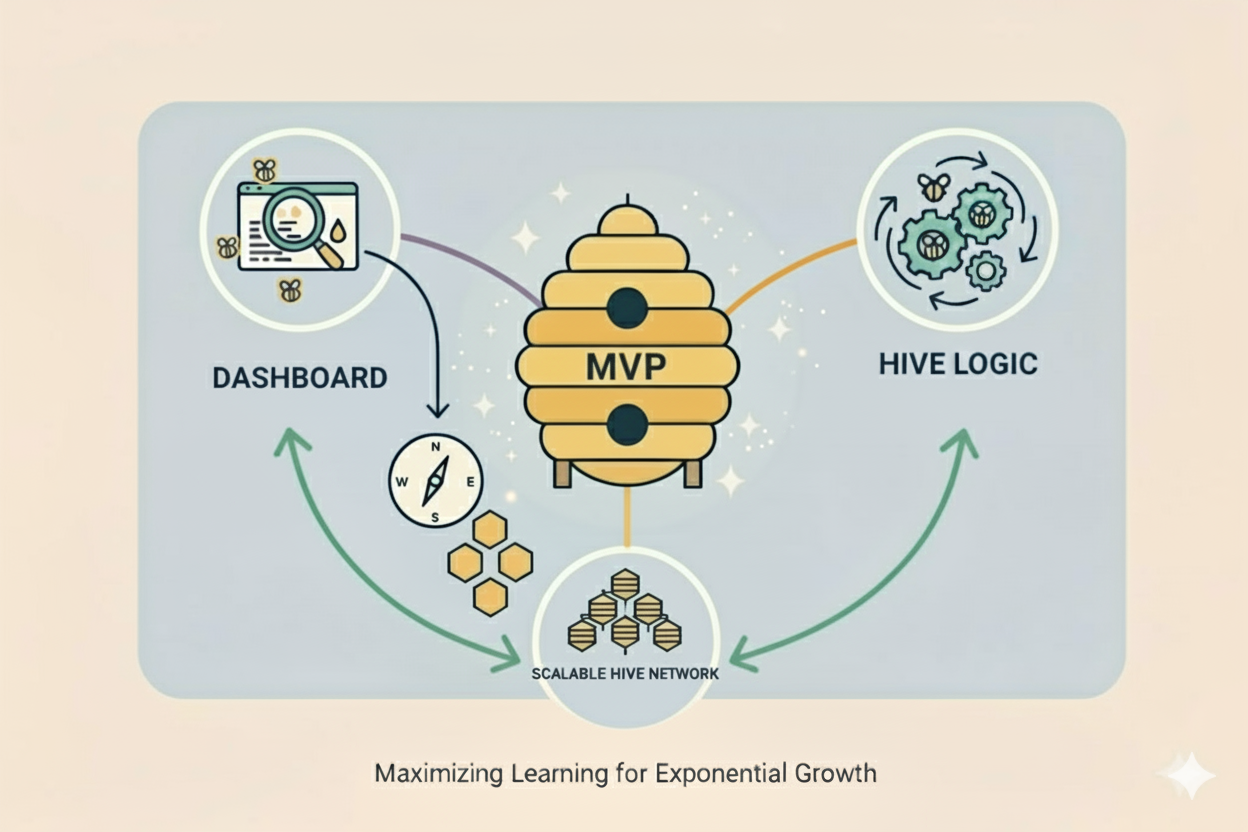
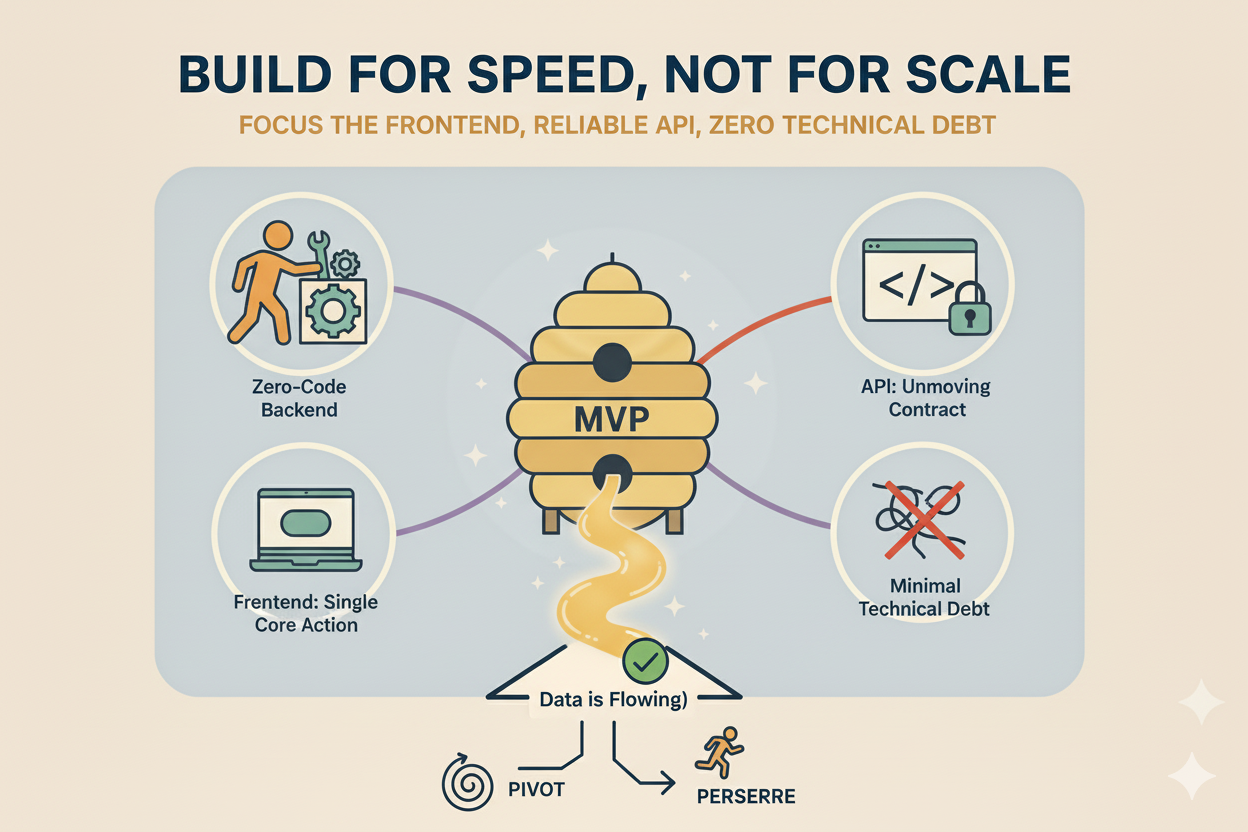
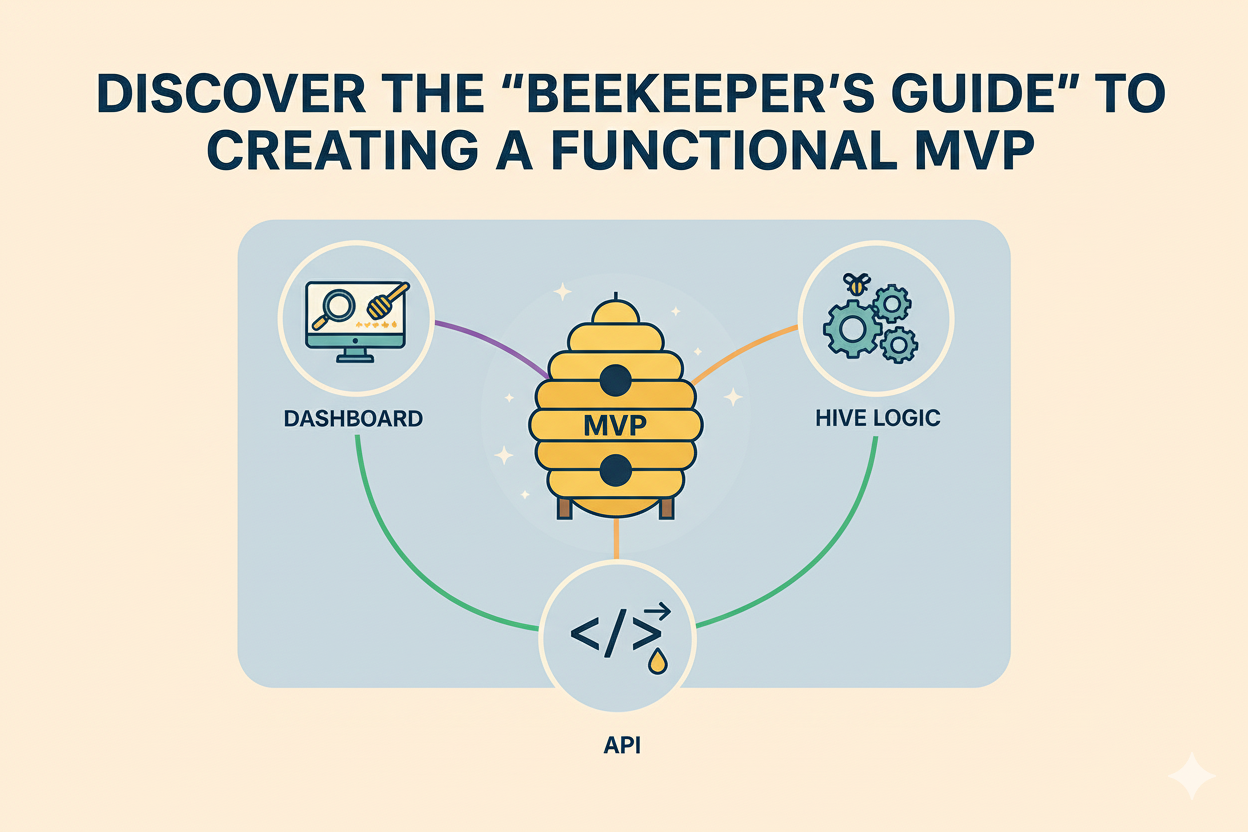
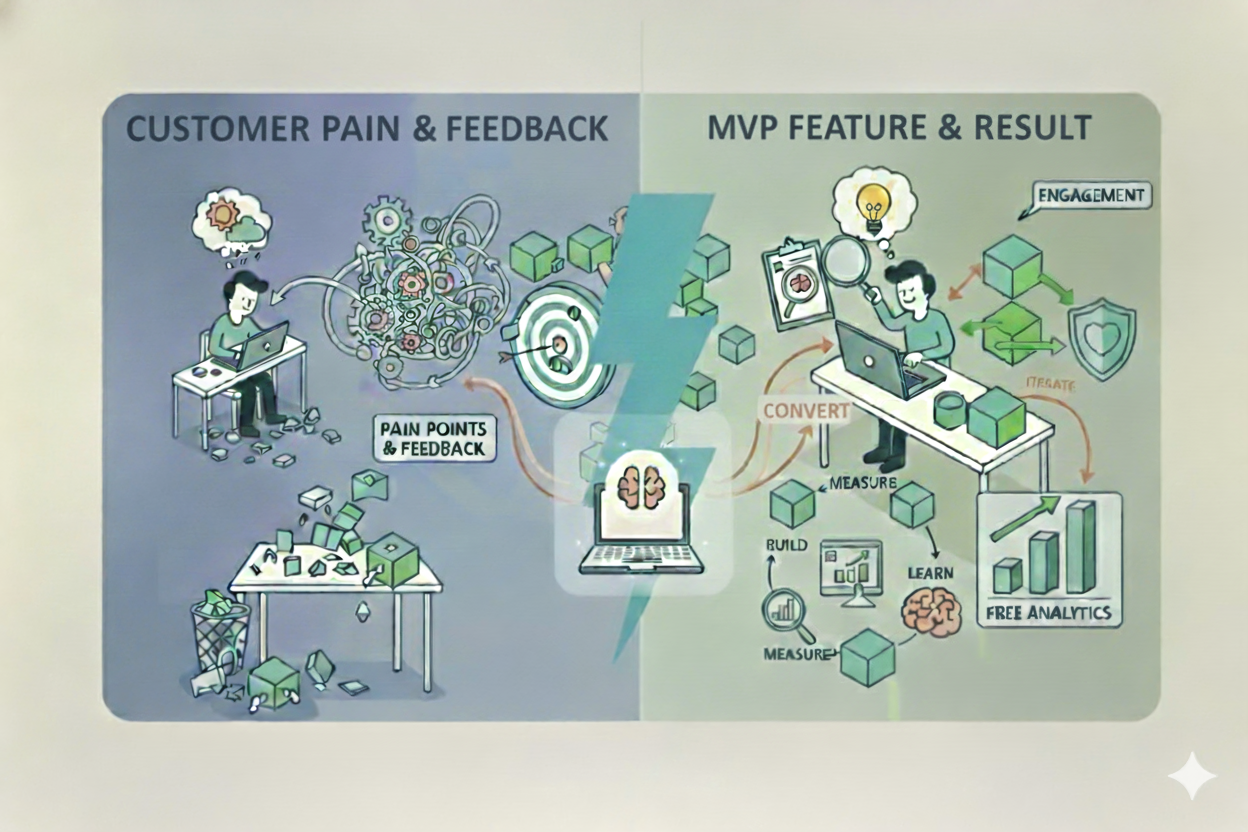
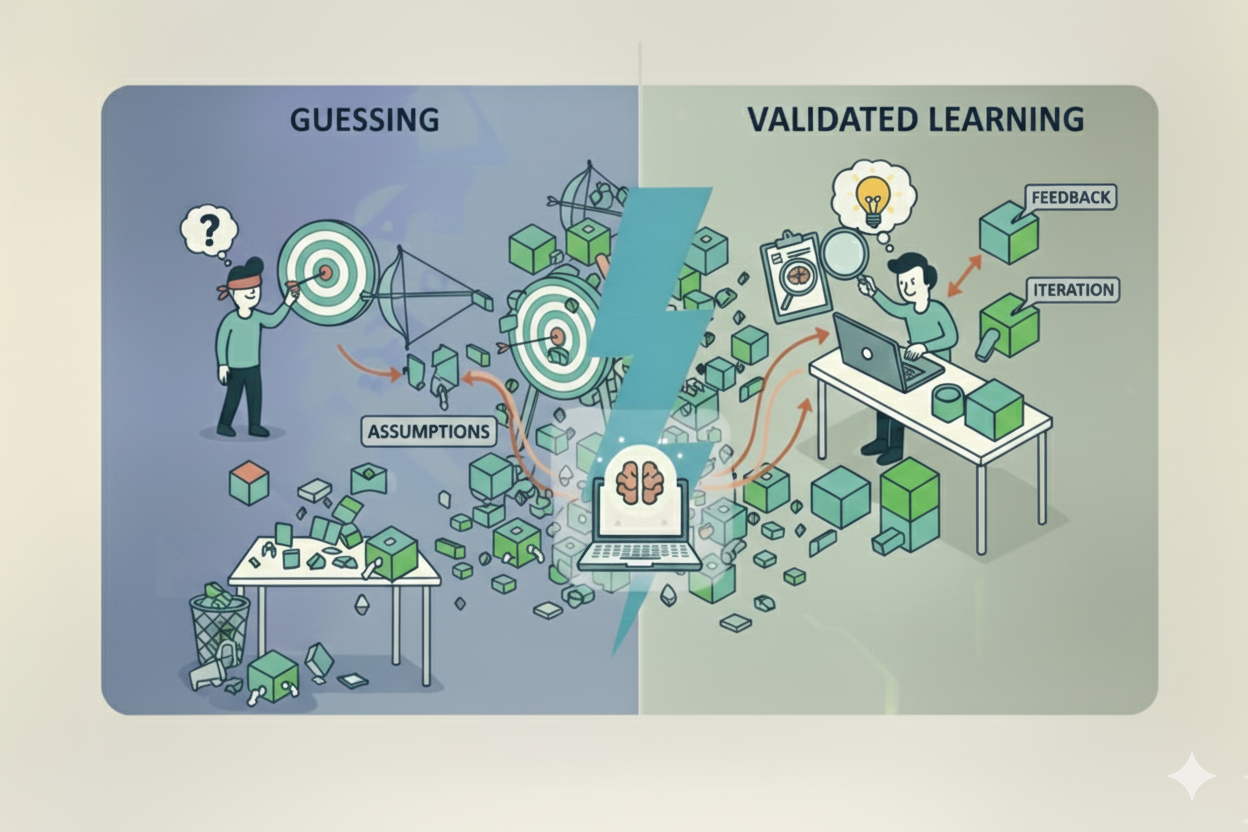
No comments yet
Be the first to share your thoughts on this article!